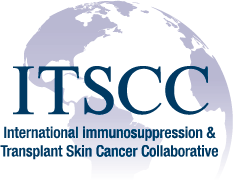Treatments will vary and are based on the type, location, and size of the skin cancer, as well as various considerations of the patient’s overall health. Treatments that exist for skin cancer include the following:
This is a substance that is applied to the skin by spray gun or by a cotton tipped applicator, like a Q-tip. It is so cold that when applied to the skin, it feels like a burn, often referred to as a "frost-bite" sensation. Application of the liquid nitrogen lasts for ~10-45 seconds depending on the lesion treated. The area treated will immediately appear red, then a scab may form, and occasionally a blister may develop. This will heal over the course of ~10 days. This is the treatment of choice for actinic keratoses. It is used for treatment of skin cancers in some cases.

This is performed by the topical application of a light sensitizing solution to the skin, followed by exposure of the treated skin to red or blue light in a doctor's office. This causes damage to the "precancerous" and cancerous cells resulting in their death. The light sensitizing solution is applied and allowed to set on the skin for ~16 hours, and then the patient is exposed to light for 12-20 minutes. There is a burning sensation during the actual light exposure. The treated area will appear red and scaly to scabby after the treatment. The skin will heal in ~10 days. This is an accepted treatment for actinic keratoses.

Commonly referred to as scraping and burning of the skin cancer. The area of skin where the skin cancer is located is numbed with local anesthetic. Skin cancer cells do not have the regular cell-to-cell attachments of healthy skin cells. This allows them to be removed by scraping the skin where the cancer is with a curette (scraping device), leaving the surrounding non-cancerous skin intact. The area is then treated with an electrical current to seal over blood vessels and destroy any remaining cancer cells. The area may be treated with liquid nitrogen instead of the electrical current. This is generally used for early skin cancers, especially superficial basal cell carcinoma and superficial squamous cell carcinoma. Melanoma would never be treated this way.
The skin cancer is treated by numbing the area with a local anesthetic and then removing the skin cancer with a surgical knife (referred to as a scalpel). After the cancer is removed, the area is often closed with stitches. The cancer specimen is then sent for pathologic evaluation. This is commonly used for basal cell carcinomas and for squamous cell carcinomas that cannot be treated by curettage and electrodesiccation. This is the main treatment for early melanomas.
Mohs surgery offers the highest cure rates for difficult skin cancers, particularly those on the head and neck. The area of skin where the skin cancer is located is numbed with local anesthetic. While sparing as much normal skin as possible, the cancer is removed with a surgical knife (scalpel). The tissue is examined completely under the microscope while the patient waits, to be certain all cancer roots are removed. If the entire cancer was not removed, the surgeon then goes back and removes more in the area with persistent skin cancer. Again, this is then looked at under the microscope. This process is then repeated until the skin cancer has been completely removed. Mohs surgery is the most precise way to remove skin cancer while also sparing as much normal skin as possible. After complete removal of the tumor, the area is often closed with stitches. Mohs surgery is primarily used to treat difficult basal cell carcinomas and squamous cell carcinomas on the face.
Click here for more information.
